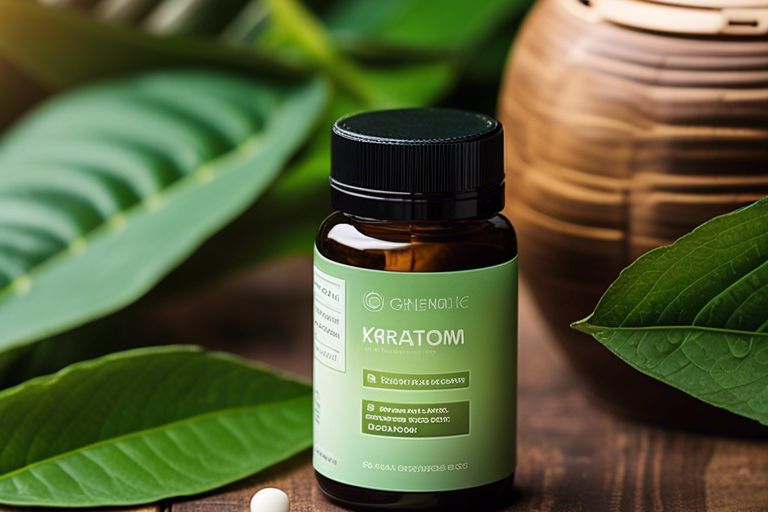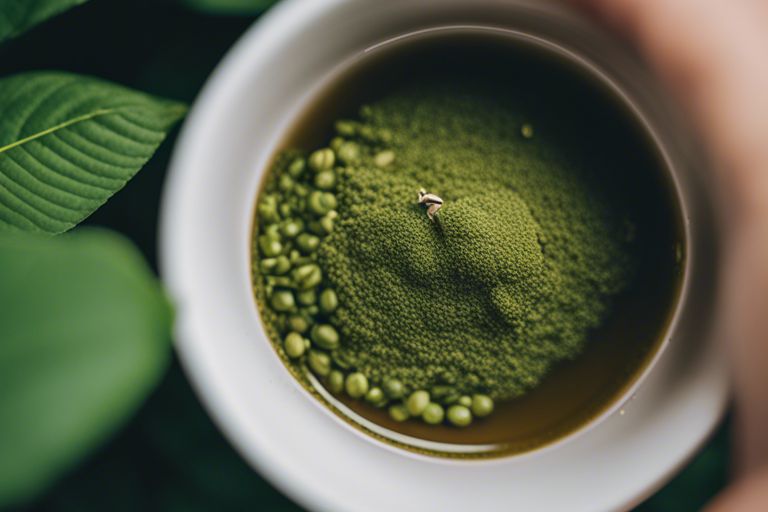Kratom, a plant native to Southeast Asia, has gained significant attention in recent years for its potential medicinal properties. As a writer, it is my duty to provide you with a comprehensive and unbiased guide to everything you need to know about kratom. From its history and various strains to its effects and potential benefits, this guide will equip you with the knowledge to make informed decisions about kratom. But what makes kratom so intriguing? What are its potential risks and safety considerations? Join me as we explore the fascinating world of kratom and uncover its secrets.
Key Takeaways
- Kratom is a tropical tree native to Southeast Asia and its leaves contain active compounds called alkaloids.
- It has a long history in southeast Asian countries and has been used in traditional medicine for centuries.
- Kratom has gained popularity in the United States for its potential therapeutic benefits.
- Different strains of kratom offer various effects, with green vein kratom providing balanced energy and relaxation, red vein kratom offering sedative qualities and pain relief, and white vein kratom known for its energizing effects and increased focus.
What Is Kratom?
Kratom, scientifically known as Mitragyna Speciosa, is a tropical tree native to Southeast Asia and belongs to the same family as the coffee plant. This tree has been used for centuries by the indigenous people of Southeast Asia for its medicinal and recreational properties. The leaves of the kratom tree contain active compounds called alkaloids, with mitragynine and 7-hydroxymitragynine being the main alkaloids. These alkaloids interact with the opioid receptors in the brain, resulting in various effects.
Kratom comes in different forms, including powder, capsules, and extracts. The effects of kratom can vary depending on the strain and dosage. There are different strains of kratom available, named after the regions they come from, such as Bali, Thai, and Maeng Da. Each strain has its own unique properties, and the effects can range from stimulating and invigorating to relaxing and soothing. It is important to note that the effects of kratom can also vary from person to person.
When using kratom, it is crucial to choose high-quality and organic products. This ensures that you are getting the purest form of kratom without any contaminants. Accurately measuring the dosage is also important, as taking too much or too little can result in different effects. It is recommended to start with a low dosage and gradually increase it until you achieve the desired effects.
While kratom has been reported to have potential benefits, it is important to be aware of the risks and precautions associated with its use. Some potential side effects of kratom include nausea, constipation, and drowsiness. Additionally, long-term use of kratom may lead to dependence and withdrawal symptoms. It is always recommended to consult with a healthcare professional before using kratom, especially if you have any pre-existing medical conditions or are taking other medications.
History of Kratom
The history of kratom can be traced back to the Southeast Asian countries where it is native, including Thailand, Malaysia, and Indonesia. For centuries, kratom has been utilized in traditional medicine to address various health conditions. Additionally, it played a role in harm reduction practices for opiate users during the 19th century.
Origins of Kratom
Native to southeast Asian countries such as Thailand, Malaysia, the Philippines, New Guinea, Indonesia, and the Borneo Region, the origins of kratom can be traced back centuries as it has been utilized in traditional Southeast Asian medicine for its therapeutic properties. Here are some key facts about the origins of kratom:
- Kratom trees are native to multiple countries in Southeast Asia, where they have been growing for centuries.
- The leaves of the kratom tree are harvested and processed to create kratom powder, which is the most common form used by beginners.
- Kratom has a rich history in Southeast Asian cultures, where it has been used for pain relief as well as for its energizing and mood-enhancing effects.
- The alkaloids found in kratom, such as mitragynine and 7-hydroxymitragynine, are responsible for its effects and are the main reason why people take kratom.
- The alkaloid content can vary depending on the region and strain of kratom, which can result in different effects and potency.
Understanding the origins of kratom is essential for beginners to grasp its cultural significance and potential benefits.
Traditional Uses of Kratom
Centuries ago, the people of Southeast Asia discovered the therapeutic properties of a plant known as kratom, utilizing it for various traditional uses. Native to Southeast Asia, kratom trees can be found in countries such as Thailand, Malaysia, the Philippines, New Guinea, Indonesia, and the Borneo Region. The leaves of the kratom tree contain main alkaloids, such as mitragynine and 7-hydroxymitragynine, which are responsible for its wide range of effects. In the past, kratom was used in Southeast Asia to treat various ailments, including pain, fatigue, and diarrhea. It was also used as a harm reduction tool for opiate users in the 19th century. Today, kratom has gained popularity in the United States for its potential therapeutic benefits, although its use is still controversial and subject to regulation.
Different Strains of Kratom

Different strains of kratom offer a variety of effects due to their unique alkaloid profiles. These strains are categorized by vein color and the regions they come from, such as Vietnam, Sumatra, and Borneo. When choosing a strain, it is important to consider your specific needs and experiment to find the most suitable effects for you.
Kratom Strain Varieties
Kratom strains encompass a wide range of varieties, each possessing its own unique alkaloid profile that determines its effects. Understanding the different strain varieties can help beginners navigate the world of kratom and find the right one for their needs. Here are three key strain varieties to be aware of:
- Green Vein: Known for its balanced effects, green vein kratom offers a combination of energy and relaxation. It can be a good option for beginners looking for a well-rounded experience.
- Red Vein: Red vein kratom is often favored for its sedative qualities and is commonly used for relaxation and pain relief. It may be beneficial for those seeking a calming experience.
- White Vein: White vein kratom is known for its energizing effects and is often used as a stimulant. It can provide increased focus and productivity.
Effects of Different Strains
When exploring the world of kratom, it is essential to understand the effects of different strains, as each strain possesses its own unique alkaloid profile that determines its specific impacts. Some strains of kratom, such as Maeng Da and White Vein, are known for their energizing and stimulating effects. They are often used to increase focus, enhance mood, and boost energy levels. On the other hand, strains like Red Bali and Red Vein are more sedative and relaxing. They are commonly used to promote relaxation, relieve anxiety and stress, and aid in sleep. To determine the specific effects of each strain, beginners can experiment with different serving sizes. It is important to research and choose strains that match individual needs and preferences to achieve the desired outcomes.
Choosing the Right Strain
To make an informed decision when choosing the right strain of kratom, it is crucial to consider the unique alkaloid profiles and associated effects of each strain available. Here are some key factors to consider when selecting a strain of kratom:
- Experimentation: Kratom users, especially those trying kratom for the first time, may need to experiment with different strains and vein colors to find the desired effects. Each individual may respond differently to different strains.
- White Vein Kratom: Known for its fast and stimulating effects, white vein kratom is often used for energy and focus.
- Red Vein Kratom: Red vein kratom is slow and relaxing, making it popular for pain relief and relaxation.
- Green Vein Kratom: Green vein kratom offers moderate, balanced effects, providing a blend of energy and relaxation.
Remember to start with a low dosage and gradually increase as needed. It is important to choose high-quality, organic kratom from reputable vendors to ensure the best experience. Be aware of potential side effects and always consult with a healthcare professional before starting kratom use.
Effects and Potential Benefits of Kratom

The potential effects and benefits of kratom include the management of chronic pain, alleviation of opioid withdrawal symptoms, improved mental clarity and concentration, potential relief for anxiety and depression, and the possibility of natural sexual enhancement. Many individuals turn to kratom as a natural alternative to traditional pain medications. Its active compounds, mitragynine and 7-hydroxymitragynine, interact with opioid receptors in the brain to reduce pain sensation. Some users have reported significant pain relief, making kratom a popular choice for those suffering from chronic pain conditions.
Moreover, kratom has shown promise in helping individuals experiencing opioid withdrawal symptoms. Its opioid-like effects can help alleviate the discomfort associated with the withdrawal process. However, it is essential to note that kratom itself can be addictive and may lead to dependence if used excessively or for prolonged periods.
Another potential benefit of using kratom is improved mental clarity and concentration. Some users report enhanced focus and cognitive function after taking kratom. This effect can be attributed to the stimulation of certain brain receptors, resulting in increased alertness and mental sharpness.
Furthermore, kratom may offer potential relief for anxiety and depression symptoms. Some individuals use kratom as a natural remedy to manage these mental health conditions. However, more research is needed to fully understand the mechanisms and effectiveness of kratom in this regard.
Lastly, there have been anecdotal reports suggesting that kratom can enhance sexual experiences. Some users claim that kratom increases libido and sexual stamina, leading to a more satisfying sexual experience. However, scientific studies on this topic are lacking, and individual experiences may vary.
It is important to note that the effects of kratom can vary greatly depending on the strain, dose, and individual factors. Additionally, taking kratom for the first time may have different effects compared to regular users. It is crucial to start with low doses and monitor your body’s response. Furthermore, using kratom in combination with other substances can have unpredictable effects, so caution should be exercised.
Methods of Consuming Kratom
One common method of consuming kratom is through the toss-and-wash method, where the powder is swallowed with a liquid for quick absorption. This method involves taking a spoonful of kratom powder and placing it directly in the mouth, followed by a gulp of water, juice, or another preferred liquid. The powder is then swished around in the mouth before swallowing, allowing for efficient absorption of the active compounds.
In addition to the toss-and-wash method, there are several other ways to consume kratom. These include:
- Capsules and Tablets: For those who find the taste of kratom powder unpleasant, capsules and tablets offer a convenient alternative. The powder is encapsulated or compressed into tablet form, allowing for easy ingestion without the bitter flavor.
- Brewing Kratom Tea: Kratom tea is another popular method of consumption. This involves boiling kratom powder or crushed leaves in water for a certain amount of time and then straining the liquid to remove any plant material. The resulting tea can be consumed hot or cold and offers a milder flavor compared to consuming raw powder.
- Chewing Fresh Leaves: In the native regions where kratom trees grow, chewing fresh leaves is a traditional method of consumption. This involves plucking the leaves directly from the tree and chewing them, releasing the active compounds through saliva. However, this method is less common outside of these regions due to the limited availability of fresh leaves.
- Gel Films: Gel films made from potato starch offer another way to consume kratom powder. The powder is placed on the film, which is then folded and swallowed, dissolving in the stomach for the gradual release of the active compounds.
These methods of consuming kratom provide a variety of options for individuals to choose from based on their preferences and needs. Whether it’s the toss-and-wash method for quick absorption, capsules or tablets to mask the taste, brewing tea for a milder flavor, chewing fresh leaves as a traditional approach, or using gel films for controlled release, there is a method that suits different contexts and preferences.
What are the potential risks of taking a high dose of kratom for beginners?
For beginners, the potential risks of taking a high kratom dosage comparison include nausea, dizziness, sedation, and respiratory depression. It can also lead to dependence and withdrawal symptoms. It’s crucial to start with a low dose and gradually increase to avoid adverse effects. Consulting a healthcare professional is recommended.
Safety Considerations and Potential Risks of Kratom

When considering the safety of consuming kratom, it is important to be aware of potential risks and exercise caution. Kratom, also known as Mitragyna Speciosa, is a tropical tree native to Southeast Asia. It has been traditionally used for its stimulant and opioid-like effects. However, there are safety considerations that individuals should keep in mind, especially if they are using kratom for the first time.
According to the National Institute on Drug Abuse (NIDA), kratom can cause side effects such as nausea, constipation, and dizziness. These effects are typically mild and subside on their own. However, it is important to note that prolonged and excessive use of kratom may lead to dependence. Individuals who regularly consume kratom may experience withdrawal symptoms when they stop using it.
It is also crucial to be cautious when combining kratom with other substances, especially opioids. Kratom contains compounds that can interact with opioid receptors in the brain, potentially leading to dangerous effects. Combining kratom with opioids or other drugs can increase the risk of overdose and respiratory depression.
Another safety consideration is the quality of kratom products. Kratom is not regulated by the Food and Drug Administration (FDA), so the purity and potency of the product can vary. It is important to obtain kratom from reputable sources and ensure that it has undergone proper testing for contaminants.
Is Blue Magic Kratom a Suitable Option for Beginners?
Looking for guidance on whether Blue Magic Kratom is a suitable choice for beginners? Check out the blue magic kratom reviews to get insights and feedback from experienced users. Understanding others’ experiences can help you make an informed decision before diving into the world of Kratom.
How Does Kratom Help with Pain Relief According to the Beginner’s Guide to Kratom?
If you’re wondering about the best kratom for pain relief, the Beginner’s Guide to Kratom can offer valuable insights. Kratom is believed to help manage pain due to its analgesic properties. Depending on the type and dosage, kratom can provide relief for various types of pain, making it a popular natural alternative.
What Are Some Common Misconceptions About Kratom That Beginners Should Be Aware Of?
There are several kratom myths debunked that beginners should be aware of. One common misconception is that kratom is highly addictive, but research shows that it is no more addictive than caffeine. Another myth is that kratom is a dangerous opioid, when in reality it is a natural plant with opioid-like effects.
Frequently Asked Questions
What Are the Potential Legal Implications of Consuming Kratom?
The potential legal implications of consuming kratom can vary depending on the legal status of kratom in your state. The FDA currently does not regulate kratom, but it has issued warnings about potential dangers associated with its use. State laws regarding kratom vary, with some states banning its sale and possession while others allow it with certain restrictions. There have been legal challenges to the legality of kratom, and internationally, regulations on kratom also differ. Understanding the legal history of kratom in the United States can provide further insights into its current legal status.
Can Kratom Be Safely Used Alongside Other Medications?
When considering the safe use of kratom alongside other medications, it is important to understand the potential drug interactions and risks involved. Safe dosage guidelines should be followed, and consultation with a healthcare professional is advisable before combining kratom with herbal remedies or prescription medications. Case studies on kratom drug interactions can provide valuable insight, and it is crucial to disclose kratom use to healthcare providers to ensure proper medical management. Adhering to these measures can help mitigate potential risks and ensure the safe use of kratom with other medications.
How Long Does It Take for the Effects of Kratom to Kick In?
The onset time of kratom effects can vary depending on several factors. These include the individual’s metabolism, body weight, tolerance level, and the dosage of kratom consumed. Generally, the effects of kratom can kick in within 15-30 minutes when taken on an empty stomach. However, it may take up to an hour or more if taken with food. Different methods of consuming kratom, such as capsules or teas, can also impact the onset time. It is important to note that enhancing the effects of kratom should be done cautiously and with proper knowledge of safe practices. Common misconceptions about the onset time of kratom effects should be addressed with evidence-based information to promote understanding. Personal experiences and anecdotes regarding the time it takes for kratom effects to kick in can provide insight, but should not be solely relied upon. Comparisons to other herbal supplements or substances can help contextualize the onset time of kratom effects for a better understanding.
Are There Any Potential Long-Term Side Effects of Using Kratom?
When considering the potential long-term side effects of using kratom, it is important to examine various factors such as health risks, dosage recommendations, withdrawal symptoms, liver toxicity, mental health effects, interactions with other substances, and the potential for abuse. Understanding these aspects can provide a comprehensive understanding of the potential risks and benefits associated with kratom use. By evaluating available evidence and consulting with healthcare professionals, individuals can make informed decisions about their kratom consumption and mitigate potential long-term side effects.
Can Kratom Be Addictive?
Kratom, a plant native to Southeast Asia, has gained popularity for its potential therapeutic effects. However, there is concern about its addictive properties. Kratom can indeed be addictive, with users experiencing withdrawal symptoms upon discontinuation. Treatment for kratom addiction typically involves a gradual tapering off of the substance, along with counseling and support groups. Risks of dependence and tolerance development should be considered, as well as the psychological effects of addiction. Understanding the timeline of kratom withdrawal can be helpful in managing this addiction.









